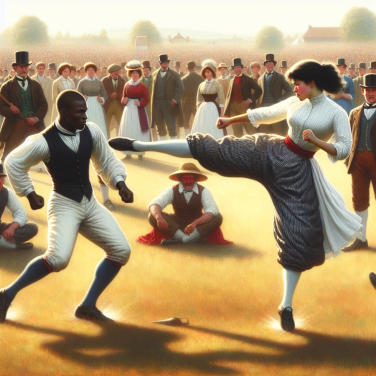Understanding the Intricacies of Skate Racing Equipment and Safety Precautions
Skate racing is a sport that's more complex than it initially appears. The nuances and details hidden behind the basic idea of rolling on two feet can feel overwhelming to individuals new to the sport. Every skate racer, be it a beginner or a pro, should have a clear understanding of the equipment required, and the safety precautions necessary.
Understanding the different types of racing skates is important. There are three main types: speed skates, roller skates, and inline skates. Speed skates are long and thin, designed to maximize speed and agility. Roller skates have two pairs of wheels, allowing for more stability but less speed. Inline skates, also known as 'rollerblades,' have a single line of wheels, which allows for faster speeds, better maneuverability, and are the most common choice for skate racing.
Each type of skate has its unique advantages and provides different experiences when racing. It is essential to select a type that aligns best with the individual's comfort level, their skill level, and the racing circumstances.
Helmets are mandatory for skate racing. Selecting the right helmet involves examining factors such as its weight, comfort, ventilation, and aerodynamics. A good racing helmet is lightweight, well-ventilated, and aerodynamic. In addition to providing protection, a helmet can also enhance performance through its shape, which can improve the racer's aerodynamics.
Other essential safety gear includes knee pads, elbow pads, wrist guards, and mouthguards. All these items serve to protect the racer from injuries, reducing the risk of fractures or serious harm during an accident. Furthermore, wearing appropriate sports clothing such as pads, guards and specialized racing suits can significantly increase the comfort and overall experience during a race.
One cannot overstress the importance of maintaining the racing equipment. Properly inflated tires and well-lubricated bearings ensure optimal performance and safety while racing. Routine check-ups and maintenance help prolong the lifespan of the equipment and provide a seamless racing experience.
Safety in skate racing extends beyond personal protective equipment. It encompasses knowing how to fall correctly to minimize injury, staying alert to the racing environment and other racers, and following the rules and guidelines of the race.
It is crucial to understand the race rules and signs to prevent accidents and ensure a fair race. Racer etiquette, such as correct passing procedures, the right to a race path, and understanding signals, is essential to maintain a safe and organized race.
Read also:
The Iconic Journey of 'Who', A Rising Star in Soccer"
Delving into Techniques and Tips for Mastering Skate Racing
Skate racing is an exhilarating sport that is both fun and challenging. It requires skills in balance, agility, and speed. Mastering this sport takes patience and a lot of practice, but it's not impossible if you have the right techniques and tips to guide you. Here's some insight into becoming a master of skate racing.
One of the primary techniques you need to master in skate racing is pacing yourself. It is essential to learn how to control your energy levels throughout the race to avoid burning out early. This involves knowing when to push and when to reserve your energy. In the early parts of the race, you should maintain a conservative pace to save your stamina for the final push.
Building core strength is also crucial in skate racing. Your core is the main source of your balance and stability, both of which are vital in this sport. Engage in regular strength training and exercises, like planks, squats, and sit-ups, that target your core muscles.
Another essential skill to cultivate is turning. Mastering tight turns can save you precious seconds in a race and can be a significant advantage over competitors. Practicing ‘cross-overs’ or taking one foot and crossing it over the other while turning helps maintain speed and stability during turns.
Also, investing in the right equipment can radically improve your skate racing performance. Different types of races often require varying styles of skates. Speed skates are typically used for racing as they are designed to be aerodynamic and lightweight. Make sure to get skates that fit perfectly, as poorly fitted skates can impede your performance and cause potential injury.
Moreover, staying low while skating can enhance your speed. Bending your knees and keeping your body low reduces air resistance allowing you to skate faster. Plus, this position also helps in maintaining balance and increasing your stability while speeding.
Another pointer is to follow a consistent training schedule. Consistency is key to improve skills and muscle memory. Practicing daily would be ideal, but ensure it includes interval training, endurance training, and flexibility workouts. This variety in workouts will not only build strength but also prevent monotony and keep your practices exciting.
Furthermore, understanding the track or course beforehand can provide a competitive advantage. Familiarize yourself with its layout, including the turns, declines, inclines, and any potential obstacles. This will allow you to strategize your speed, balance, and energy conservation during the race.




